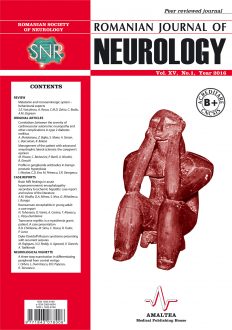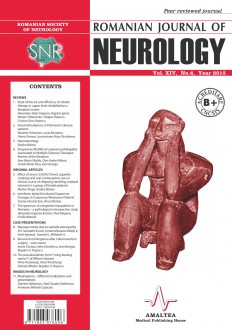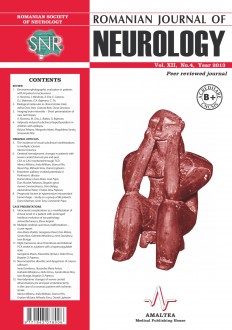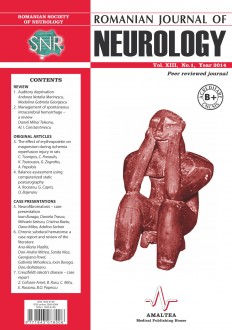SELECT ISSUE

Indexed

| |

|
|
|
| |
|
|
|

|
|
|
|
|
|
| |
|
|
HIGHLIGHTS
National Awards “Science and Research”
NEW! RJN has announced the annually National Award for "Science and Research" for the best scientific articles published throughout the year in the official journal.
Read the Recommendations for the Conduct, Reporting, Editing, and Publication of Scholarly work in Medical Journals.
The published medical research literature is a global public good. Medical journal editors have a social responsibility to promote global health by publishing, whenever possible, research that furthers health worldwide.
BRAIN MRI FINDINGS IN ACUTE HYPERAMMONEMIC ENCEPHALOPATHY SECONDARY TO ISCHEMIC HEPATITIS: CASE REPORT AND REVIEW OF THE LITERATURE
Ana-Maria Vladila, Dan-Andrei Mitrea, Sanda Nica, Gabriela Mihailescu and Ioan Buraga
ABSTRACT
Acute encephalopathy is frequently seen in Neurology and Internal Medicine Departments, it makes for a wide spectrum of neuropsychiatric abnormalities, but its brain magnetic resonance imaging appearance in the adult population is not well recognised.
We present the case of an acute hyperammonemic encephalopathy in the setting of ischemic hepatitis secondary to global heart failure and its MRI findings with a review of the literature.
Keywords: acute hepatic encephalopathy, hyperammonemia, ischemic hepatitits, insular cortex, FLAIR hypersignal, restriction of diffusion
Full text | PDF



